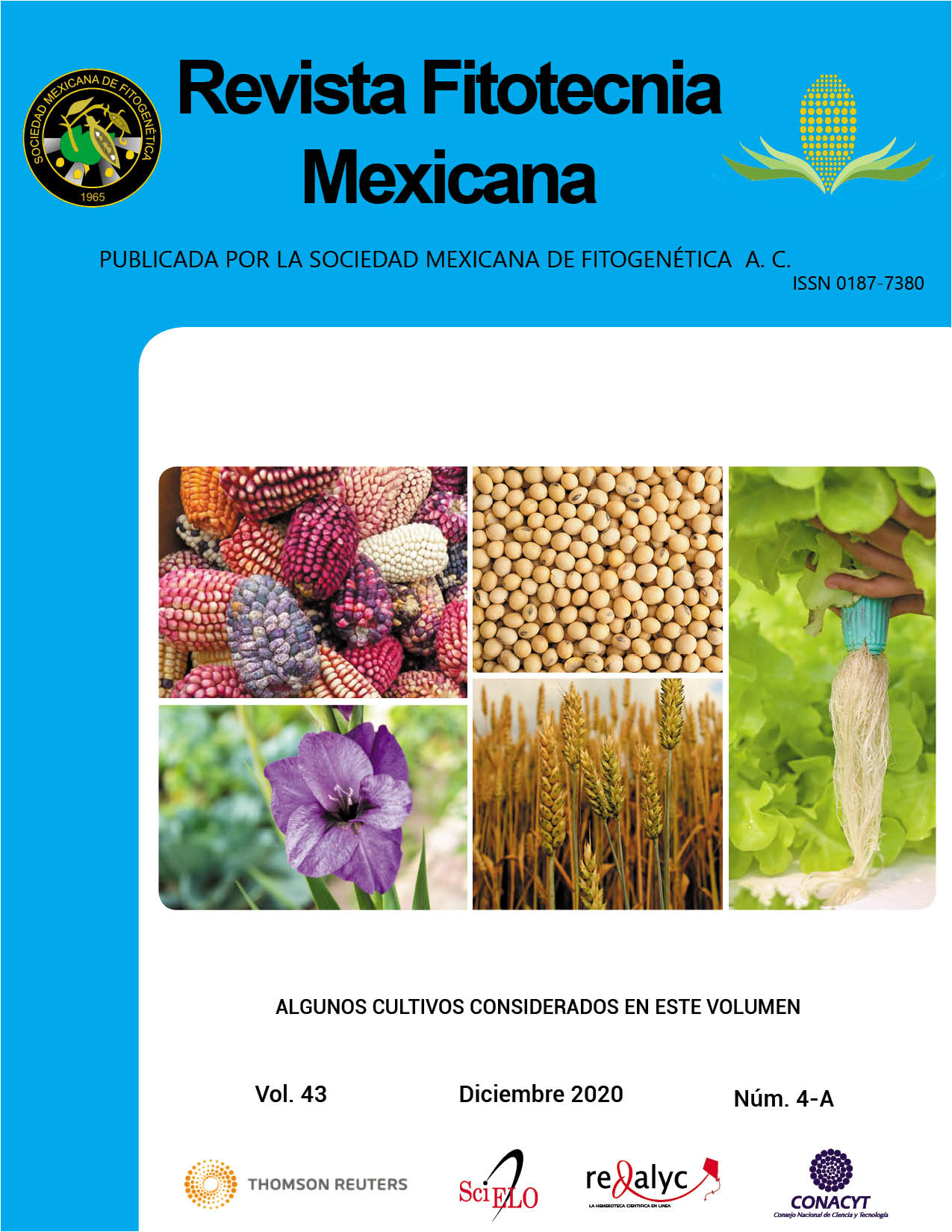PHOTOSYNTHETIC RESPONSE OF HYDROPONIC LETTUCE TO NO3-/NH4+ RATIOS IN SUMMER AND AUTUMN
Main Article Content
Abstract
Lettuce (Lactuca sativa L.) is an important food crop that is grown worldwide. Its photosynthetic and metabolic performance is dependent on light and temperature parameters. On the other hand, the source of the nitrogen (N) supply to the plant is directly related to photosynthetic efficiency, which is why photosynthesis is affected by the availability of N and by radiation. Based on the above, the aim of the research was to evaluate the photosynthetic response of the lettuce crop in hydroponics with nitrate/ammonium ratios (NO3-/NH4+) in summer and autumn. The lettuces were grown in a floating root hydroponic system. The experimental design was completely random, with factorial arrangement 4 x 2, four ratios of NO3-/NH4+ (100/0, 80/20, 65/35 and 50/50) and two seasons (summer and autumn), with a total of eight experimental units with 300 plants per season. Maximum efficiency of photosystem II (Fv/Fm), effective efficiency of photosystem II (ФPSII), electron transport rate (ETR), net CO2 assimilation (Pn), transpiration rate (E) and stomata conductance (gs) were evaluated. The environmental conditions of autumn promoted an increase in all the variables of photosynthesis. The 100/0 ratio increased 17.5 % plus ФPSII and 15.73 % plus gs. The summer season interaction with the 50/50 ratio decreased Fv/Fm to 0.78 and in ETR the 100/0 was lower by 41.76 %. The application of NH4+ in the nutritive solution in doses greater than 35 % decreased the variables of photosynthesis in the lettuce crop in summer. The photosynthetic reaction associated with increasing proportions of ammonia N in the nutrient solution is dependent on the growing season (summer or autumn), apparently associated with temperature and radiation.

